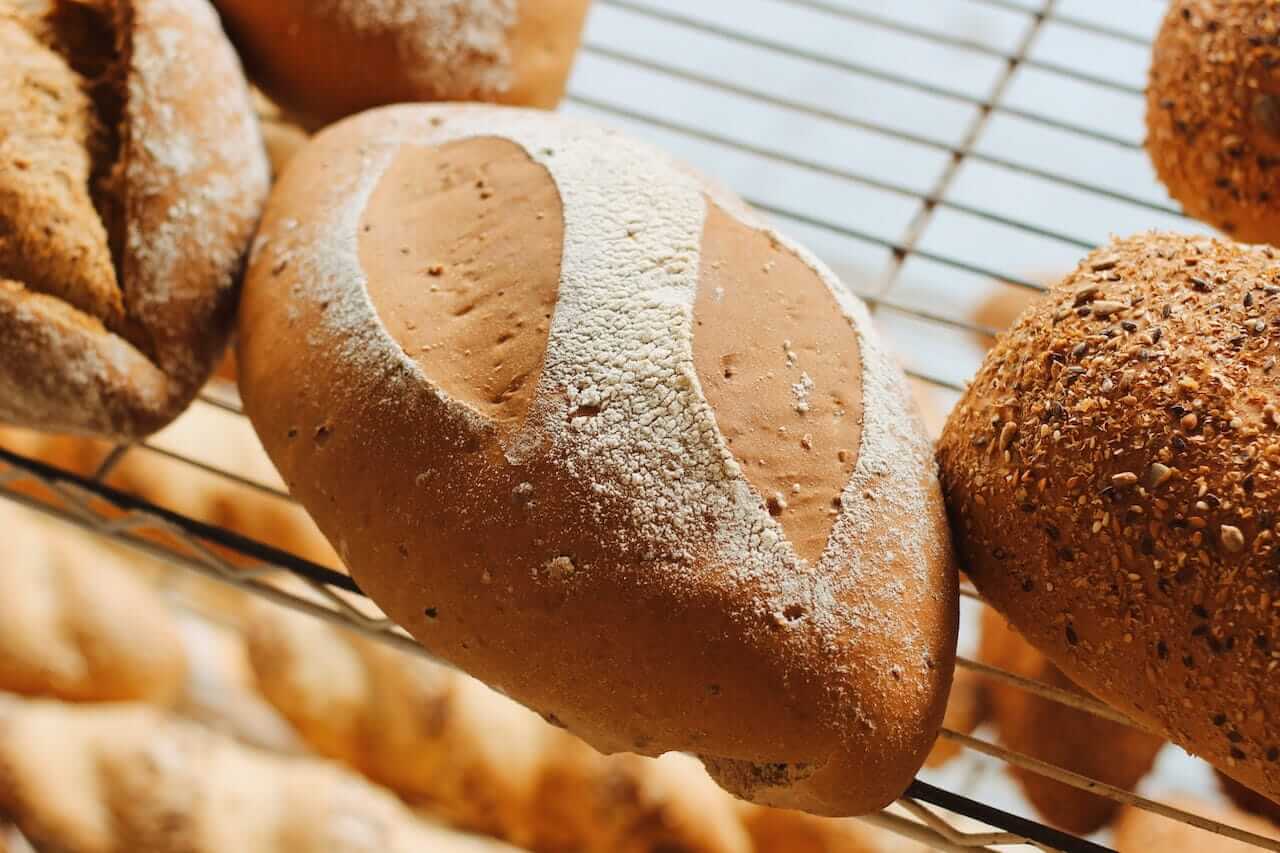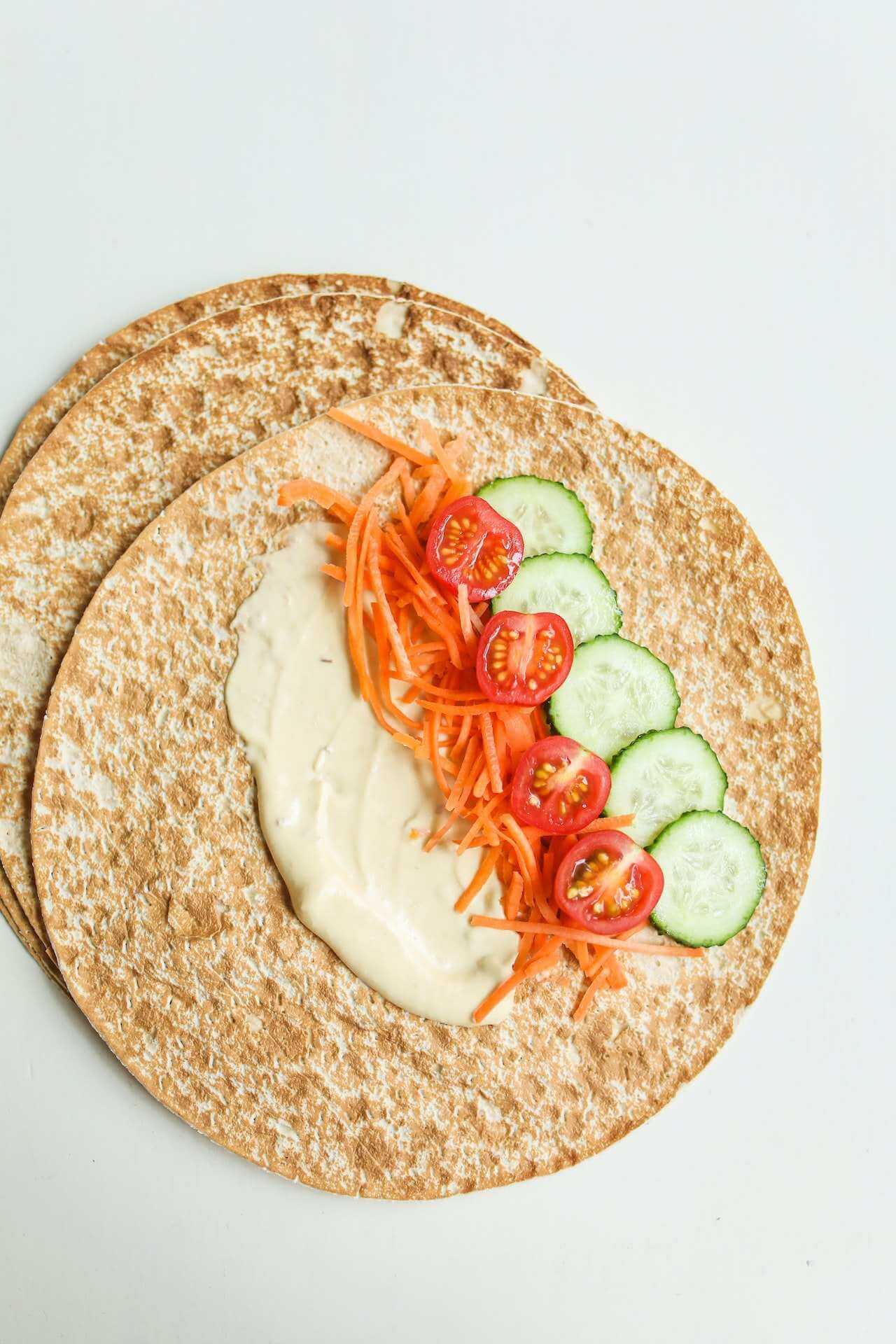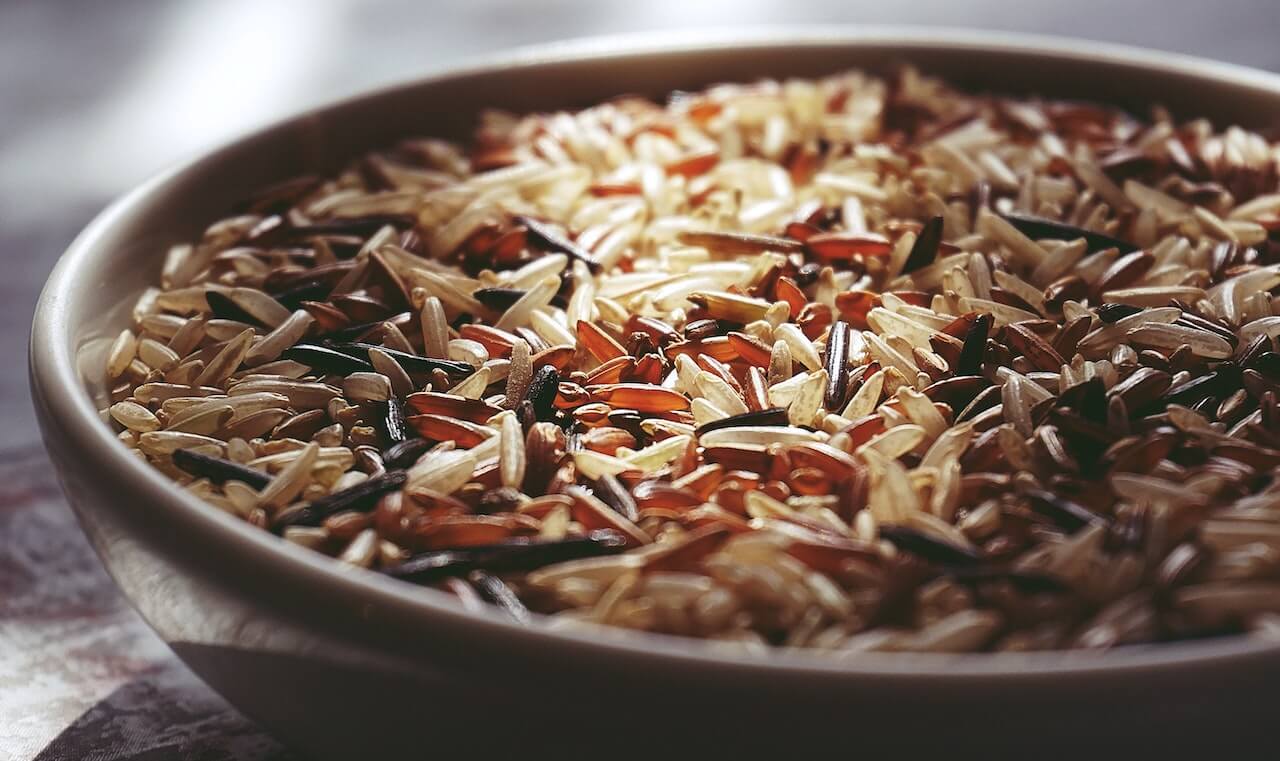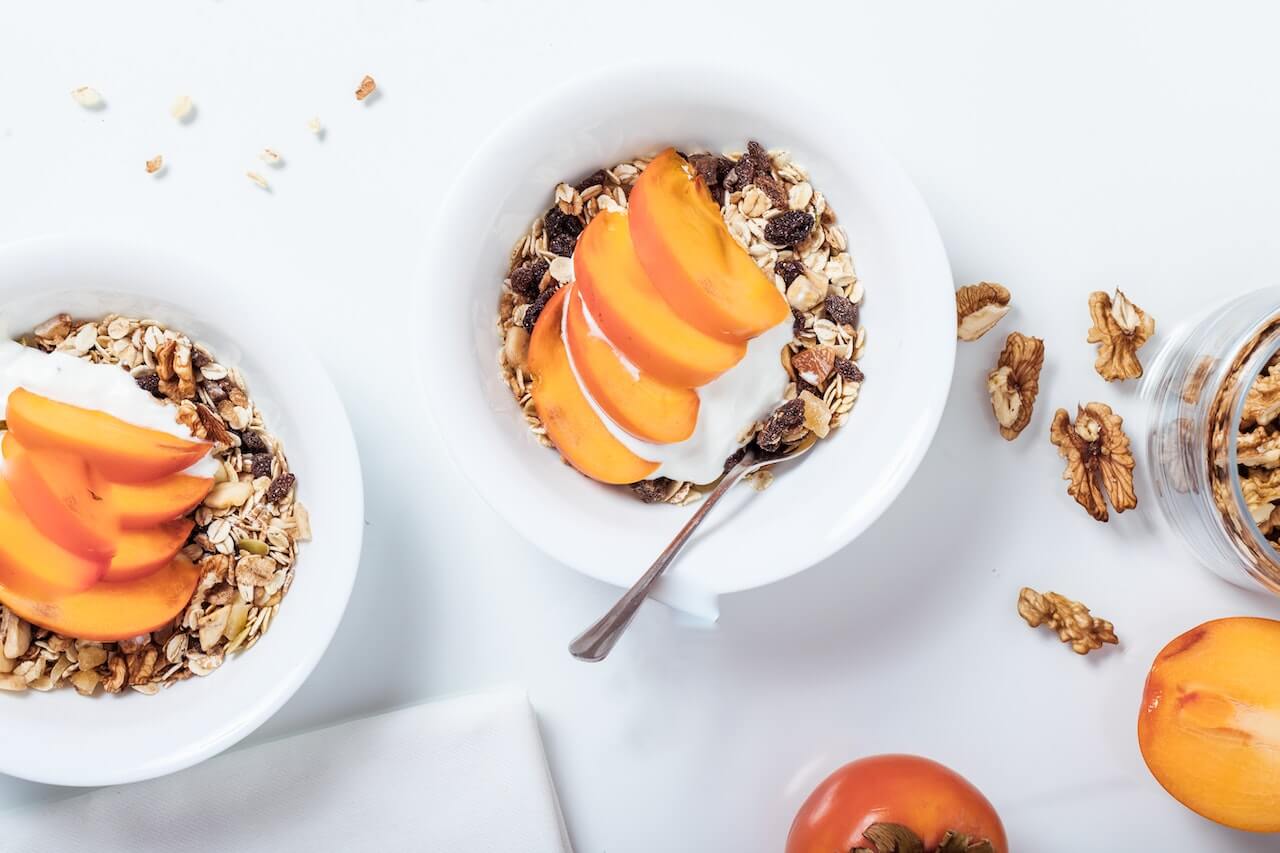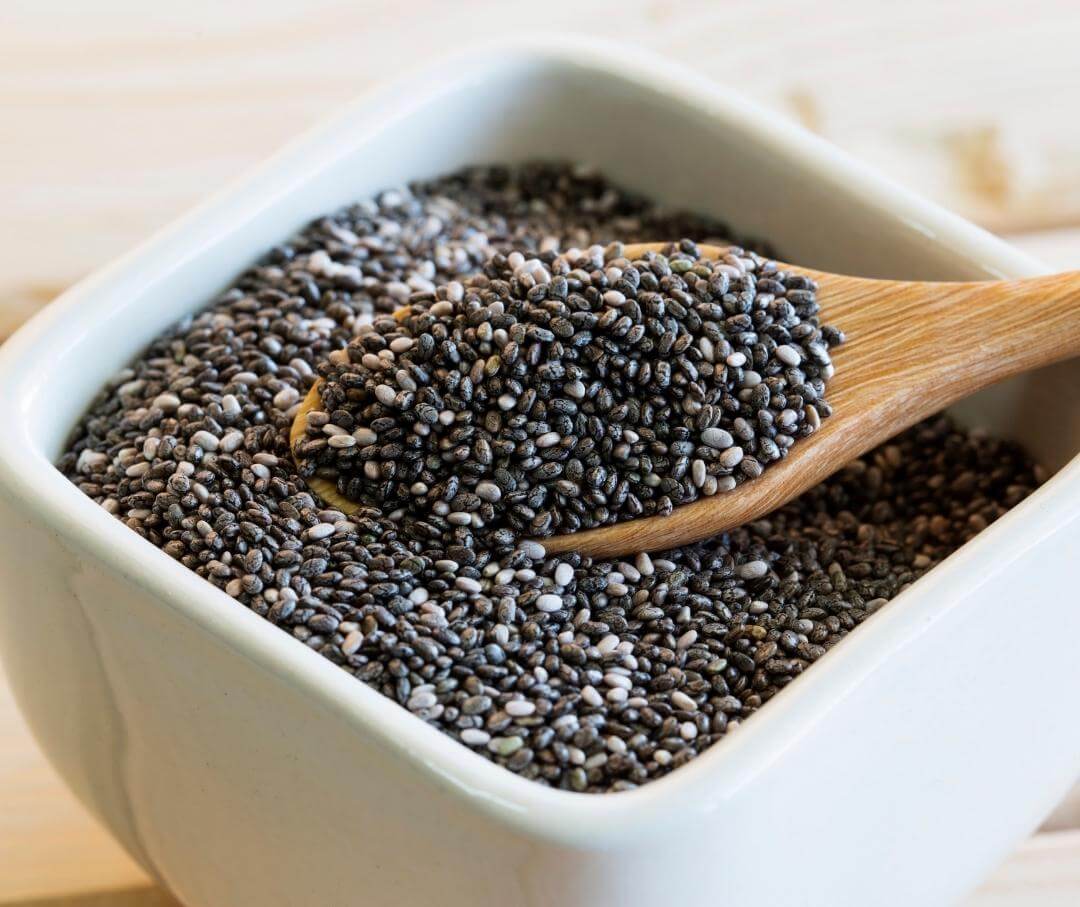Multigrain bread is simply multiple types of grains mixed into one loaf of bread. These grains might be oat, rye, barley, or wheat and can even include seeds like pumpkin or flaxseed. Multigrain breads are often whole grain, which has a lower glycemic index compared to white bread. Buyer beware: multigrain bread can be a refined grain like white bread and can lack fiber (more on whole grains and refined grains later).
Bread has been a staple in the world for thousands of years. It was originally an unprocessed whole grain. Whole grains are rich in fiber, protein, and nutrients. This complex fiber-rich carbohydrate source provides essential energy that the body needs to ensure adequate glucose levels in the bloodstream. Bread has the unique ability to turn a single food into a meal. For example, lunch meat alone cannot provide glucose stability for hours until the next meal. But when you put a few slices of turkey with tomato, lettuce, and avocado in between two pieces of bread, you have a well-balanced that can keep you feeling satiated and blood glucose stable for a few hours.
Today, we have an abundance of options in the grocery store. So let’s clear up the difference between white bread and multigrain bread (and everything in between), so you can make healthier choices.
White bread is made from refined white flour. The white flour grain was processed extensively - scrubbing the protein, fiber, and vitamins off the outer layer of the grain. The loss of fiber and protein causes white bread to be absorbed quickly and raises glucose levels quicker.
Similarly, multigrain bread may contain several types of grains that were processed like white bread flour. The term ‘multigrain’ does not ensure that the flour blends used contain the whole grain. Multigrain only means that several grains were used to make the bread. To decipher between refined bread and whole grain bread, we have to look for keywords (like 100 percent whole grain) on food labels.
{{mid-cta}}
Benefits of Multigrain Bread

Whole grain bread means that the grain kernel is still intact, which packs a nutritional punch. The grain kernel is made up of the endosperm, germ, and bran. The endosperm is the largest part of the grain kernel containing most of the carbohydrates and lowest in vitamins and minerals. Bran is in the outermost layer of the grain kernel and contains fiber, vitamins, protein, and some minerals. The germ is also important, containing more fiber, vitamins, lignans, fatty acids, phytochemicals, and minerals.¹ Here are some examples of whole grains:
- Whole wheat
- Sorghum
- Barley
- Rye
- Brown rice
A refined grain is a grain kernel that has been milled or scrubbed of the bran and varying portions of the germ, removing much of the original nutrients. Refined grains have about 25% of the protein removed and 50 to 66% of the other nutrients removed.
Refined grains are required by law to be enriched. This replenishes some of the vitamins and minerals lost.² But it’s better to start with the original product.
Some of the benefits of including whole grain bread in your daily diet include:
Helps Lower Cholesterol
There is growing evidence linking increased intake of whole grain foods with wide-ranging health benefits. People consuming more whole grains have a lower risk for heart disease, possibly related to the cholesterol-lowering benefits of whole grains.⁴
Supports Stable Blood Sugar
The fiber in whole grains is also linked to a lower risk of type 2 diabetes and metabolic syndrome. A comprehensive systematic review found that people with the highest intake of whole grains had a significantly lower risk of developing type 2 diabetes.⁵
A recent study among women showed an increased risk of type 2 diabetes when consuming refined grains and steady weight gain over time. The authors calculated a 43% reduction in diabetes incidence when they were consuming at least 2 servings of whole grains daily compared to women consuming no whole grains.⁶
Promotes Weight Loss
Consumption of whole grains is associated with a lower body mass index (BMI) and more stable weight long-term.³
When we eat less fiber (bye-bye bran and germ), our blood glucose levels tend to spike quickly, which will cause more cravings throughout the day. This, in turn, leads to uncontrolled glucose levels, weight gain, and metabolic instability. Eating fiber-rich foods at most meals helps achieve healthy weight loss, too.
Keeps You Regular
Eating more dietary fiber from whole grains keeps your gut happy and promotes regular bowel movements. People who eat more whole grains may have better digestive health.³
Provides Valuable Micronutrients
As you read above, keeping the grain kernel intact means a higher nutritional value than you’d find in refined grains. Whole grain options are the best breads because they provide important micronutrients like B vitamins, magnesium, iron, potassium, and zinc, plus phytonutrients and antioxidants.
<p class="pro-tip"><strong>Learn More: </strong><a href="is-pita-bread-healthy">Is Pita Bread Healthy for Weight Loss? All You Need to Know</a>.</p>
Whole Wheat Bread vs Multigrain Bread
How does multigrain bread stack up to our typical whole wheat bread? Let’s compare apples to apples or, in this case, whole wheat bread to whole grain multigrain bread.
These two types of bread will be almost identical in terms of calories, fiber, protein, fat, added sugar, vitamins, and minerals. As long as they are both made with whole grains, they can both help stabilize blood glucose. The tricky thing to remember is that whole wheat bread is always whole grain. Multigrain bread can be whole grain but could be a refined grain, and may hinder weight loss. Make sure to check the ingredient list for all whole grain flours (ideally, one of the first ingredients).
Multigrain Bread and Glucose Levels
Whole grain multigrain bread has a glycemic index of 41, and multigrain bread containing some refined flour has a glycemic index of 66.⁷ White bread (fully refined) has a glycemic index of 70.⁷ A glycemic index of 70 or above is considered high. The glycemic index is a 100-point scale measuring your blood glucose response after eating a specific food.
If a food has a higher glycemic index, try pairing it with a protein-rich option like eggs, meat, or no added sugar Greek yogurt to slow down the body’s glucose response. Additionally, adding more fiber in the form of vegetables or berries will help too!
What to Look for When Buying Multigrain Bread
As a recap, you will need to be diligent when checking a multigrain bread label. Start by checking the ingredient list: look to ensure all the grains are listed as whole grains, the more grains used, the better (12 different whole grains vs. 2 whole grains).
Next, look at the fiber content to find your healthiest option. Make sure it is above 2g per serving (aim for more than 3g) for stable blood glucose levels and fewer cravings.
Most breads will have about 15 to 20 g of carbs per serving. If the bread is much higher, look for a different option in that aisle. You can get under 15g with some extra digging.
Sometimes this is harder when baking from scratch, but you will have fresh bread and know exactly what ingredients are used.
Finally, check the food label for any extra sweeteners and protein content. White bread has about 2g of protein per slice, while some whole grain breads have 5g of protein! The extra protein will help stabilize your blood glucose levels and result in better glucose control.
Multigrain Bread Recipe
There’s something about the smell of fresh baked bread (almost as good as cookies during the holidays). Instead of buying bread from the store, try one of these multigrain bread recipes:
This multigrain seeded bread is made with sunflower seeds, sesame seeds, and pumpkin seeds. The recipe is courtesy of the American Diabetes Association.⁸
Multigrain Seeded Bread
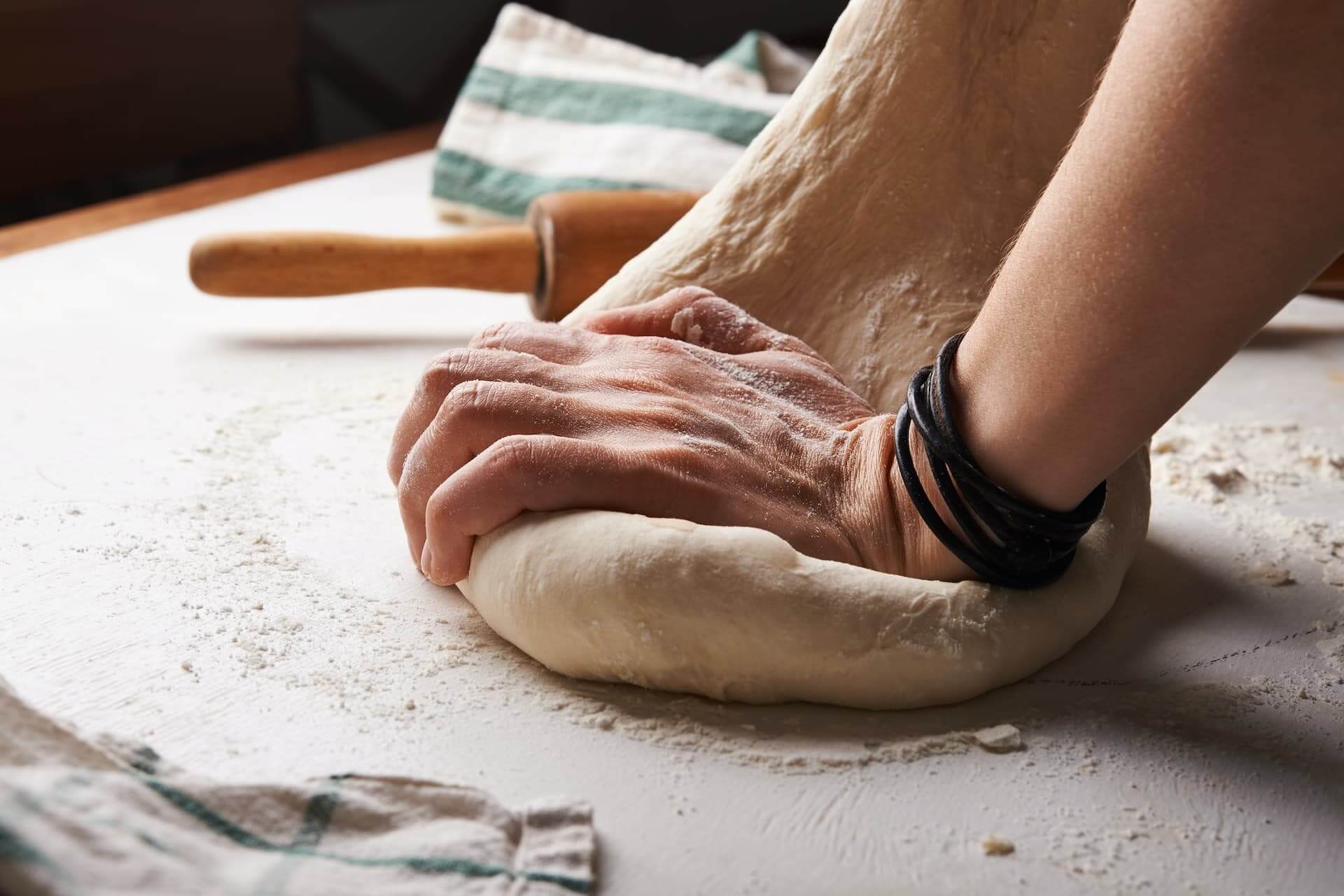
Ingredients
- 1 ½ cups whole wheat flour
- ¾ cup all-purpose flour
- 1 (.25 ounce) package active dry yeast
- ½ teaspoon salt
- 3 tablespoons sunflower seeds
- 3 tablespoons sesame seeds
- 3 tablespoons shelled pumpkin seeds
- ⅓ cup rolled oats
- 1 cup water
- 2 tablespoons molasses
- 1 egg white
- 1 tablespoon 1% milk
Instructions
- In a large bowl, combine the whole wheat flour, all-purpose flour, yeast, and salt. In another bowl, mix the seeds with the oats.
- In a saucepan, combine the water and molasses and warm the mixture over low heat until a thermometer reads 120 to 130 degrees F (50 to 55 degrees C).
- Add the liquid to the flour mixture with the egg white. Mix together until a soft dough forms.
- Turn the dough onto a lightly floured surface. Knead for 10 minutes; then shape into a ball. Lightly oil a large stainless-steel bowl. Add the dough and turn to cover the dough with the oil. Cover the bowl with a tea towel and let rise in a warm place for 2 hours until doubled in size.
- When the dough has risen, punch the dough down with your fists and add all but 2 tablespoons of the seed mixture, working it into the dough. Reserve the 2 tablespoons of seed mixture for the topping. Shape the dough into a loaf by rolling it into a 12 x 8-inch rectangle and then roll it up by its shortest end. Pinch the ends together and tuck them underneath. Place in a non-stick 9x5 inch loaf pan with the seam underneath. Cover the loaf pan with a tea towel and let rise for 1 hour until doubled in bulk.
- Preheat the oven to 350 degrees F (175 degrees C). Brush the top of the loaf with milk and sprinkle on the reserved seed mixture. Bake the bread for 30 minutes or until the loaf sounds hollow when tapped on the bottom. Remove the bread from the pan and let cool completely.
Nutrition Facts for 1/12 of the loaf: 126 calories, 22gm carbohydrates, 3gm fiber, 5gm protein
If you are in need of a vegan multigrain bread version, look no more and give this recipe a try! This sandwich bread is gluten-free, oil-free, sugar-free, xanthan gum-free, and yeast-free (but not flavor-free).⁹
Easy Gluten-Free Multigrain Sandwich Bread
Ingredients
- 3 and 1/4 cups (769 mL) water
- 1 cup (184 g) raw buckwheat groats
- 1 cup (220 g) raw millet
- 1 cup (100 grams) rolled oats
- 1 tablespoon (15 mL) apple cider vinegar
- 1/3 cup (27 g) whole psyllium husks
- 2 teaspoons baking powder
- 3/4 teaspoon baking soda
- 3/4 teaspoon salt
Instructions
- Preheat the oven to 325F(160C). Note: do not use a convection setting for this bread (see post for explanation). Spray or grease a 9x5-inch (22.5x12.5 cm) loaf baking pan.
- Place the water, buckwheat, millet, oats, and vinegar in a blender container. Blend on high, stopping once or twice to scrape down the container, until smooth.
- Pour the batter into a large bowl. Stir in the psyllium husks, baking powder, baking soda, and salt until blended (it will become very thick).
- Pour the batter into the prepared loaf pan, smoothing the top.
- Bake in the preheated oven for 90 minutes until the surface appears golden brown, dry, and crusty. The bread will sound hollow when tapped.
- Cool in the pan, on a cooling rack, for 15 minutes. Remove the bread from the pan and cool completely on the cooling rack before slicing.
Nutrition Facts for 1/16 of the loaf: 118 calories, 23gm carbohydrates, 4.6gm fiber, 4gm protein.
<p class="pro-tip"><strong>Also Read: </strong><a href="why-sourdough-bread-is-good-for-you">Why Sourdough Bread Is Good for You: 6 Health Benefits of Sourdough Bread</a>.</p>
- Item 1
- Item 2
- item 3
Topics discussed in this article:
References
- McRae M. P. (2017). Health Benefits of Dietary Whole Grains: An Umbrella Review of Meta-analyses. Journal of chiropractic medicine, 16(1), 10–18. https://doi.org/10.1016/j.jcm.2016.08.008
- https://wholegrainscouncil.org/whole-grains-101/whats-whole-grain-refined-grain
- Seal, C. J., & Brownlee, I. A. (2015). Whole-grain foods and chronic disease: evidence from epidemiological and intervention studies. The Proceedings of the Nutrition Society, 74(3), 313–319. https://doi.org/10.1017/S0029665115002104
- Nazari, J., Yadegari, N., Khodam, S., Almasi-Hashian, A., & Amini, S. (2021). Effect of Consumption of Whole-Wheat Breads on FBS, HbA1c, and Blood Lipids in Patients with Type 2 Diabetes. Preventive nutrition and food science, 26(3), 269–274. https://doi.org/10.3746/pnf.2021.26.3.269
- Ghanbari-Gohari, F., Mousavi, S. M., & Esmaillzadeh, A. (2022). Consumption of whole grains and risk of type 2 diabetes: A comprehensive systematic review and dose-response meta-analysis of prospective cohort studies. Food science & nutrition, 10(6), 1950–1960. https://doi.org/10.1002/fsn3.2811
- Parker, E. D., Liu, S., Van Horn, L., Tinker, L. F., Shikany, J. M., Eaton, C. B., & Margolis, K. L. (2013). The association of whole grain consumption with incident type 2 diabetes: the Women's Health Initiative Observational Study. Annals of epidemiology, 23(6), 321–327. https://doi.org/10.1016/j.annepidem.2013.03.010
- Alkurd, R. A., Takruri, H. R., Muwalla, M. M., & Arafat, T. A. (2020). Glycemic and insulinemic responses of multi-grain types of bread marketed in Jordan. Current Research in Nutrition and Food Science Journal, 8(2), 640-648.
- https://www.allrecipes.com/recipe/15770/multigrain-seeded-bread/
- https://www.powerhungry.com/2022/03/gf-vegan-multigrain-sandwich-bread/

